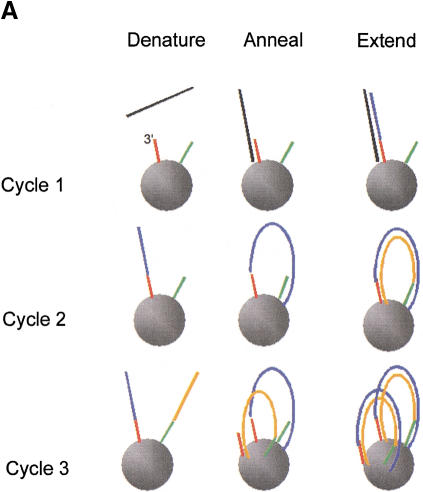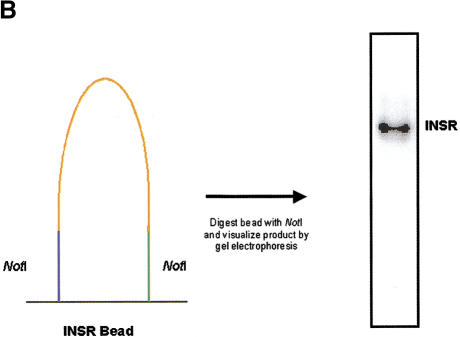Figure 1.
(A) Solid-phase amplification. Acrydite-containing primers are incorporated into an acrylamide bead or spot. Multiple cycles of denaturation, annealing, and extension result in a product that is covalently attached to the surface at both ends. (B) Solid-phase amplification from genomic DNA. Digested human genomic DNA was amplified using an acrylamide derivatized polyester sheet containing the INSR RsaI-specific primers. Amplification products were released from the beads with NotI and run on a 10% acrylamide TBE gel. (C) Multiplex, solid-phase PCR with human genomic DNA. Shown is a composite of six 10% Acrylamide TBE gels. Fifty-eight beads (57 beads containing PCR primers and one blank bead) were multiplexed and the resulting radiolabeled products released from the beads are shown in random order. No amplification is observed with beads lacking oligonucleotide primers. Amplification products range in size from ∼70 bp to ∼1300 bp.



